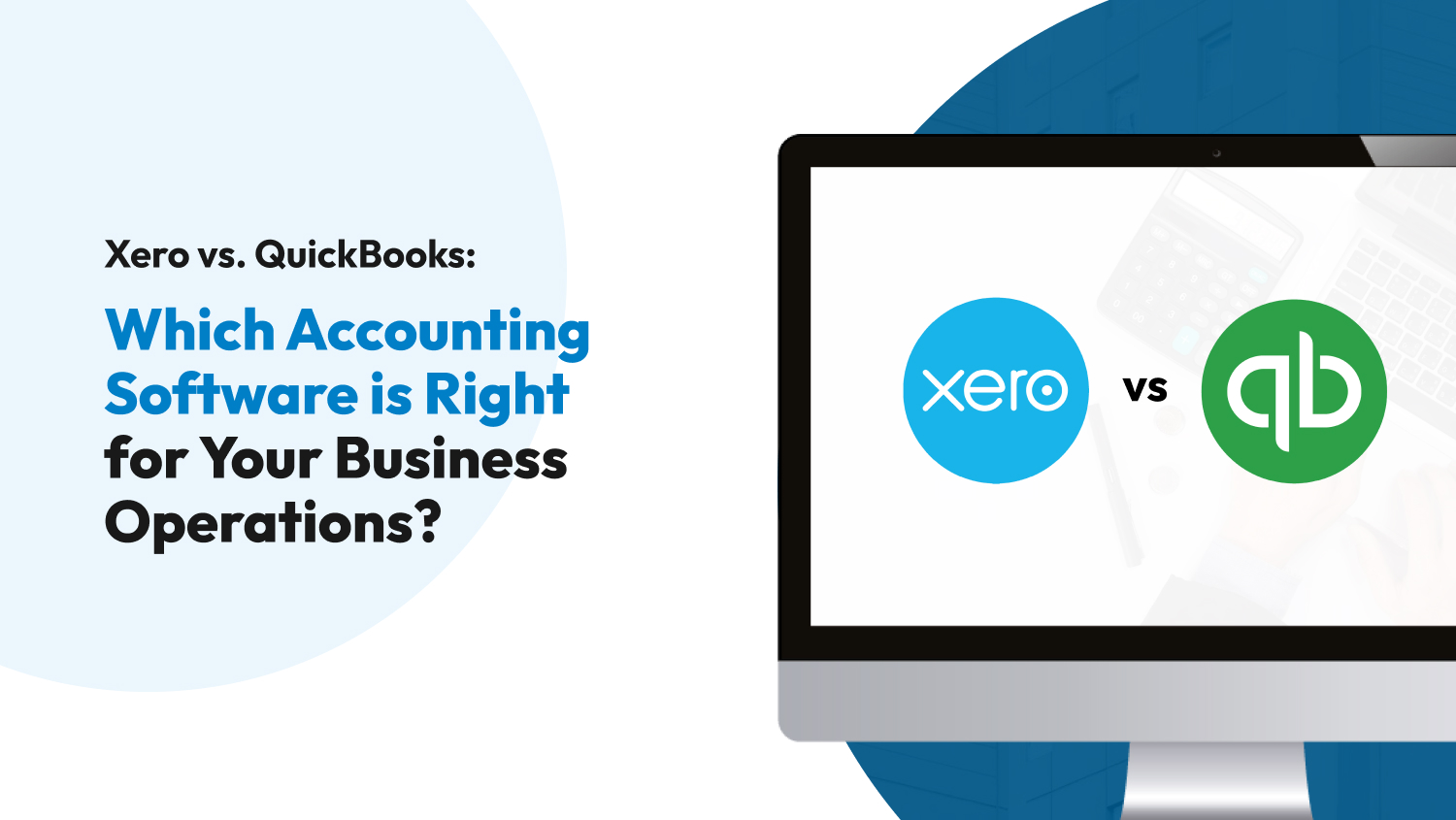Business
Xero vs. QuickBooks: Which Accounting Software is Right for Your Business Operations?
We live in a fast-paced world, and we survive by making financially-sound decisions. For businesses, informed decisions that make or break ventures begin with feature-rich accounting software.
Xero and QuickBooks are scalable accounting platforms meant for businesses of all sizes. However, they specialize in different aspects of bookkeeping — so which must you pick for your business?
Let us help you with that.
Xero vs. QuickBooks: The Facts
A fair and honest comparison starts with a list of factors to compare the two software. For Xero and QuickBooks, these are the following:
- Usability
- Invoicing
- Expense Tracking
- Inventory
- Analytics and Reporting
- Third-Party Integrations
- Cost
Usability
Accounting is difficult enough, and your software shouldn’t exacerbate that. That’s why when picking an accounting tool, you must choose one that is usable, accessible, and functional.
Both Xero and QuickBooks have a sleek modern interface with plenty of features on their main dashboard, making balancing books an easy feat. You can also customize your dashboard on both applications with shortcut links, saving a significant amount of time.
Your Xero journey starts with a challenging setup process. However, this is easily overcome with the extensive onboarding features Xero offers like:
- Access to documentation
- Import support for contacts, receipts, and previous bank statements
- Information pop-ups
After that, navigating Xero becomes a cakewalk. Everything in Xero is neatly organized, with every asset and feature properly compartmentalized in different drawers.
QuickBooks is similar to Xero but has a customizable layout from the get-go. It doesn’t offer as many onboarding options as Xero, but you can quickly access your bookkeeping data in its main dashboard. Moreover, hovering over categories on the left side of the dashboard brings up a quick view of its features.
What We Prefer: Regarding usability, Xero (1-0) is the better option, especially for beginners and small business owners.
Invoicing
Keeping track of your cash flow is essential to bookkeeping. Invoices help by getting a record of every employee payment with a certifiable digital copy, and it can also help as a reminder for overdue payments.
Let’s start with Xero. You have access to invoice editing on Xero, as well as an invoice template that you can customize to reflect your needs. As for its features, you can send a repeating invoice that resends monthly or weekly and maximize its bulk invoicing. The downside, however, is that you can only send 20 invoices monthly in Xero’s lowest tier.
QuickBooks excels in invoicing. Xero only gives you a singular invoice template, whereas QuickBooks has five for you to choose from. It also has no invoice limit and allows you to repeat an invoice on specific dates. QuickBooks also has accessibility in mind, as it enables multilingual invoicing for international transactions.
What We Prefer: Without a doubt, QuickBooks (1-1) is the superior platform for invoicing.

Expense Tracking
The net revenue of your business doesn’t only factor in your sales — it also includes expenses. That’s why getting an overview of your business’s financial health starts with keeping track of your every business expense.
QuickBooks and Xero have many expense tracking features that ensure your bookkeeping is always accurate and up-to-date. You have the option to either track your expenses using the following:
- Automatic Tracking: Live bank feeds
- Manual Tracking: Personal input of bank statements, purchases, and receipts
Tags are also available on both platforms to search your expense history quicker.
QuickBooks also allows you to attach receipts on expense inputs and share them with your team for transparency. You can also implement bank rules in QuickBooks to categorize automatic bank transactions.
On the other hand, you must pay an additional $4 per month for Xero Expenses if you’re getting the Xero Starter plan.
What We Prefer: Xero’s additional fee for expense tracking puts QuickBooks (1-2) up on top.
Inventory
Does your business involve e-commerce? If so, picking an accounting tool with ample inventory management features is also necessary for your business. This lets you track the stock of your products and monitor who takes them.
There are a lot of similarities between inventory management in Xero and QuickBooks. Both can:
- Add product information
- Add to the stock of services or products
- Attach photos or videos to your services or products
- Change stock numbers
- Track sales, return, and restock
QuickBooks offers more. To start, QuickBooks has product bundles that can increase your sales number in the long run. Moreover, you can set and save default prices, purchase numbers, SKU info, images, and descriptions on QuickBooks.
What We Prefer: Xero works fine as an inventory management tool, but QuickBooks (1-3) exceeds expectations.
Analytics and Reporting
Accounting runs on numbers. Most accounting platforms let you see your data, but an effective tool must have in-depth analytics and reporting to tell you what your data means.
QuickBooks and Xero both have capable reporting suites. Starting with QuickBooks, it offers two kinds of reporting, which are:
- Source: Short summary of your data
- Targets: In-depth data information
As for available reports, here are the available report groups on QuickBooks and some of what they contain:
- Accountant and Taxes: Trial balance, general ledger, audit trail report
- Company and Financial: Profit and loss, balance sheet
- Contractor Edition Reports: Job cost by vendor, cost to completion by job
- Customers and Receivables: Accounts receivable aging, open invoices
- Employees and Payroll: Deposit, check, missing checks, reconciliation discrepancy
- Inventory Reports: Inventory valuation
- Jobs, Time, and Mileage: Job profitability, estimates by job
- List: Account listing, price listing, customer and vendor phone list, terms listing
- Manufacturing and Wholesale Edition Reports: Sales by rep, sales by product
- Non-Profit Edition Reports: Biggest donors or grants, budget against actual by donors or grants
- Professional Services Edition Reports: Billed or unbilled hours by person, project cost and status
- Purchase Reports: Purchase by vendor, open purchases
- Retail Edition Reports: Profit and loss by month, sales graph, accounts payable graph
- Sales Reports: Sales by customer
- Vendors and Payables: A/P aging, vendor balance, unpaid bills
On the other hand, Xero has several report templates to choose from. These reports are free and fully customizable. You also have basic analytics on Xero for free, but advanced analytics comes at $7 monthly.
As for analytics, QuickBooks has an in-app native integration to Fathom — a complete data suite with reporting, analysis, and forecasting features. This provides insights into how well you’re performing against the competition and how financially stable your business is for the future.
What We Prefer: With its reporting and analysis features, QuickBooks (1-4) handily wins this category and snags another point.
Third-Party Integrations
Xero and QuickBooks are capable tools at their core, but what if you could improve them by giving them more features? This is achievable with third-party integrations — a feature that lets two applications connect and share functionalities.
QuickBooks has more than 750 native integrations, and while we don’t have an exact number, Xero native integrations are in a similar ballpark. This includes popular applications such as:
- Expensify: Expense Management
- HubSpot: Customer Relationship Management
- PayPal: Virtual Payments
- Zapier: Task Automation
You can also create custom integrations if you have a developer on your team. This lets you integrate Xero and QuickBooks indirectly to tools that aren’t on their app store.
What We Prefer: Xero and QuickBooks are too similar in this category, so we’ll declare this one a tie.

Cost
Speaking of accounting, you must also consider the cost of these accounting platforms. However, cost-effective solutions don’t mean picking the cheaper option — it means choosing the option that gives you more value per dollar spent.
Here are the plans Xero offers, how much each one cost, and some basic information about it:
| Plans | Starter | Standard | Premium |
| Starting Price Per Month | $25 | $40 | $54 |
| Invoice | Maximum of 20 | Unlimited | Unlimited |
| Bank Reconciliation | ✓ | ✓ | ✓ |
| Bill Management | Maximum of 5 bills | Unlimited | Unlimited |
| Cross-Currency Transactions | ✗ | ✗ | ✓ |
Xero has some additional costs depending on your desired features. For example:
- Xero Advanced Analytics: $7 per month, free for the first four months
- Xero Expenses: $4 per month per user
- Xero Project Tracking: $7 per month, $5 per additional user
Moving on to QuickBooks. You can get this application for the following prices:
| Plans | Simple Start | Essentials | Plus | Advanced |
| Starting Price Per Month | $30 | $55 | $85 | $100 |
| Invoice | ✓ | ✓ | ✓ | ✓ |
| Bank Reconciliation | ✓ | ✓ | ✓ | ✓ |
| Bill Management | ✓ | ✓ | ✓ | ✓ |
| Cross-Currency Transactions | ✗ | ✓ | ✓ | ✓ |
What We Prefer: It’s a close call, but Xero (2-4) wins this round because of its lower prices and customizable cost.
Last Words
It was a difficult battle between Xero and QuickBooks. Although Xero snagged some points, QuickBooks ultimately won the accounting war at 4-2. However, there are still some good reasons to pick Xero over QuickBooks.
Xero is a cost-effective solution for accounting — perfect for small or new businesses. It has an accessible and usable interface, ensuring you won’t get lost while navigating the software. Moreover, it provides ample invoicing, tracking, analysis, and reporting features for your accounting needs.
Pick QuickBooks if you value functionality over cost and ease of use. It has Fathom as its primary analytics and forecasting suite. It also offers extensive inventory, invoicing, and expense-tracking features to keep your finances healthy and sound.
Accounting platforms are crucial to your business, and anything less than your due diligence may result in picking the wrong one. So, make a mental list of your bookkeeping needs and remember our recommendations when choosing between Xero and QuickBooks.








